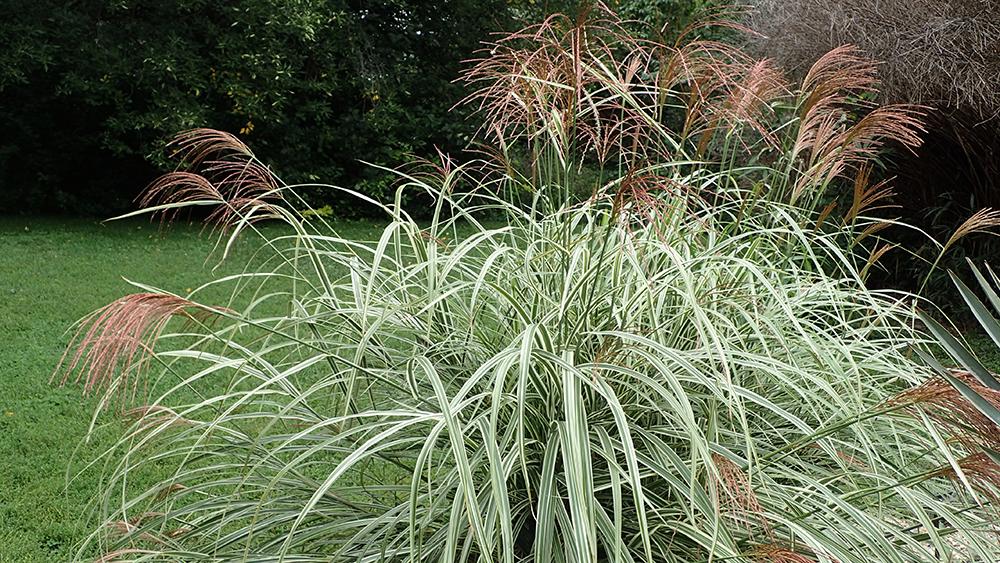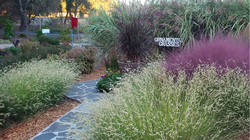Ornamental Grasses: Movement & Texture in the Garden

Whether you want to create a naturalistic meadow, showcase a dramatic backlit border, or line a path, ornamental grasses are up for the job. Ornamental grasses and other grass-like plants like rushes and sedges are easily grown and work with many garden styles. They grow on the coast, on hillsides, deep in the forest, and in meadows and marshes. They range from small, green, and wide to 5-foot tall vertical accents. Some are evergreen. Others are deciduous but their dried stems and flowers remain attractive in winter.
Use our list of > GRASSES FOR EVERY GARDEN
These are easy to grow and provide many benefits.
Benefits of ornamental grasses
• Attractive all year
• Disease free
• Require little care
• Provide cover, nesting material, and food for wildlife
• Colorful – many shades of blue, green, tan, pink, orange, ivory
• Mix well with garden perennials, succulents
• Many require little water
• Deer don't bother them
• Provide unique vertical element to the landscape
• Add movement to the garden; many sway with the slightest breeze
• Native grasses address the loss of California's grasslands, which are among the most endangered ecosystems in the US (estimate: only 1% of our original grasslands remain).

Grasses grow based on temperature. Some will begin growing in early spring when temperatures are still cool. Others wait until the soil is warm and temperatures are more stable.
Cool-season grasses
• Evergreen
• Looks good all year
• Not as vigorous as warm-season grasses. If you cut too much off the leaves it will not have the energy necessary to produce new growth.
Examples: blue oat grass (Helictotrichon sempervirens) , tufted hair grass (Deschampsia cespitosa) and 'Karl Foerster' feather reed grass (Calamagrostis x acutiflora).
Warm-season grasses
• Go dormant in fall
• Perform better during warmer months, even with limited water
• New growth appears when weather and soil warms
• Big grasses can be challenging to prune and divide. Learn more about caring for grasses.
Examples: Japanese silver grass (Miscanthus), fountain grass (Pennisetum), and switch grass (Panicum).
Clumping versus running grasses
• Clumping grasses form neat mounds or clumps.
• Running grasses spread by underground rhizomes, which can travel in almost any direction and become aggressive and invasive
Example: Clumping bamboo (Bambusa) grows from the base of the plant only, so the clump gets larger each season. Running bamboo spreads by tenacious rhizomes that move around the garden – and maybe even pay your neighbors a visit.
